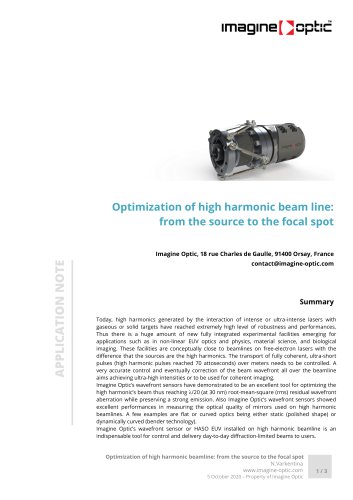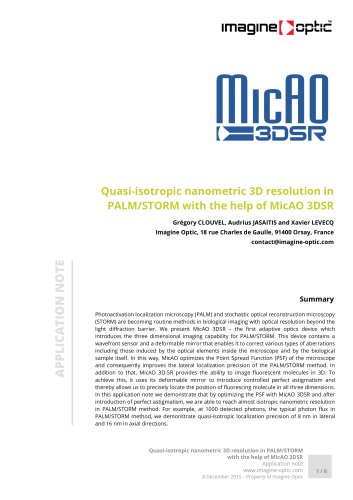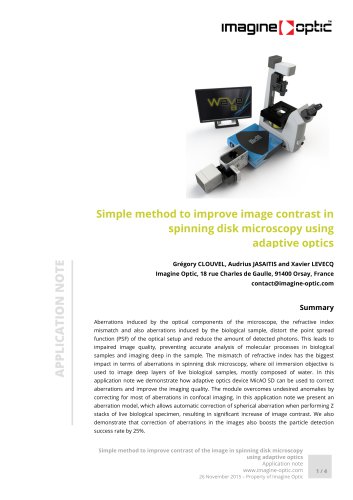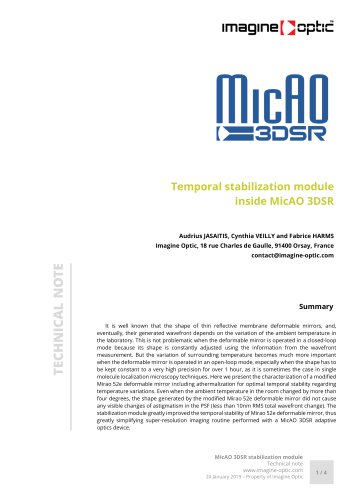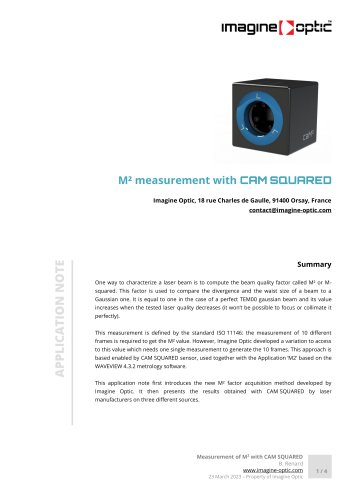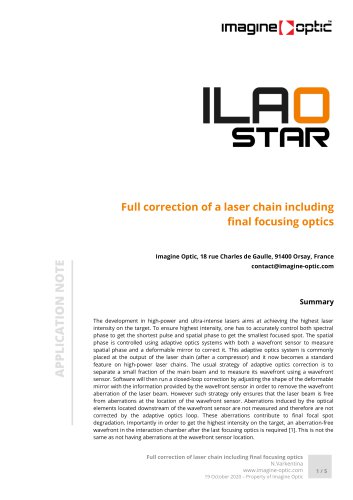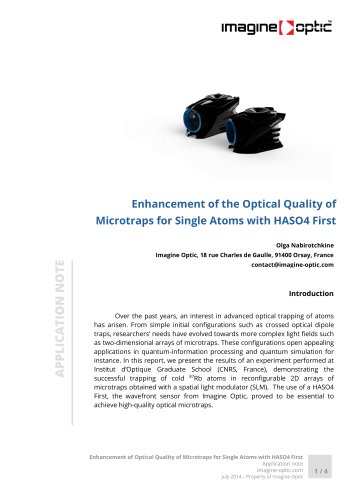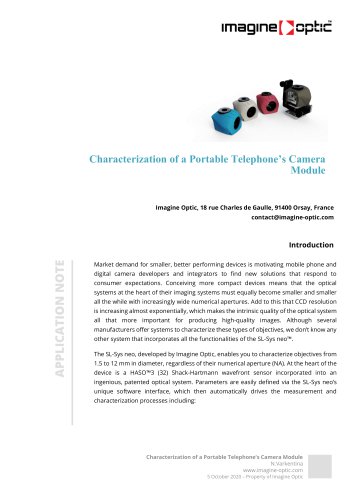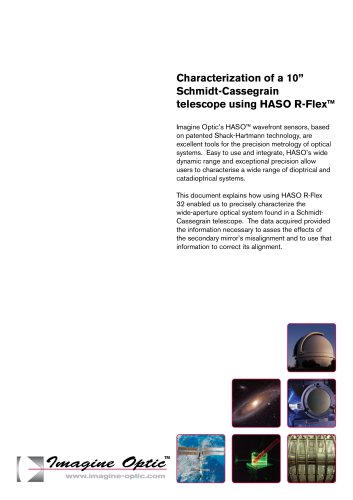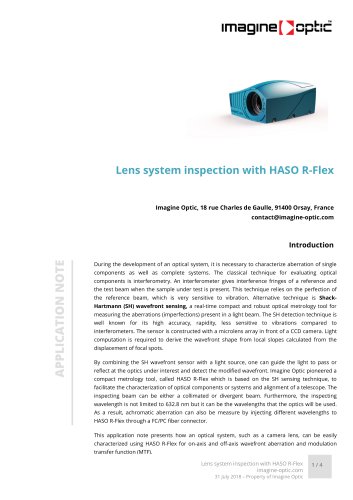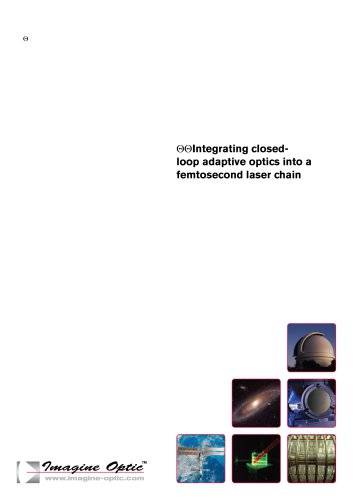
Catalog excerpts
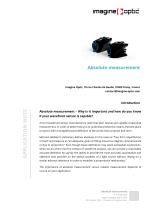
Absolute measurement Imagine Optic, 18 rue Charles de Gaulle, 91400 Orsay, France contact@imagine-optic.com Introduction Absolute measurement – Why is it important and how do you know if your wavefront sensor is capable? A lot of wavefront sensor manufacturers claim that their devices are capable of absolute measurement. In order to better help you to understand what this means, the best place to start is with a straightforward definition of the words that comprise that term. Merriam Webster’s dictionary defines absolute (in this case) as “free from imperfection or fault” and measure as “an adequate, given or fitting amount or degree; commensurate or due to proportion.” Even though these definitions may seem somewhat oxymoronic, when we put them into the context of wavefront analysis, we can provide a reasonably accurate definition by saying “the ability to provide the most accurate, quantitative and objective data possible on the optical qualities of a light source without relying on a similar external reference in order to establish a proportional relationship.” The importance of absolute measurement versus relative measurement depends of course on your application. Absolute measurement N.Varkentina www.imagine-optic.com
Open the catalog to page 1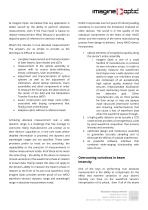
At Imagine Optic, we believe that any application is HASO incorporates over ten years of industry leading better served by the ability to perform absolute excellence to overcome the limitations imposed on measurement, even if the final result is based on other devices. The secret is in the quality of the relative measurement. Why? Because it provides an individual components at the heart of each HASO objective point of reference for decision making. sensor and the mastery of the entire manufacturing What’s the interest in true absolute measurement? The answers are as simple to provide as...
Open the catalog to page 2
criteria are met beyond reproach and to varying degrees, all wavefront sensors are sensitive to the effects of heterogeneous intensity distribution in the measurement pupil on phase aberration measurement. Although Hartmann wavefront sensors and shearing or point-source diffraction interferometers are particularly sensitive to this malignant effect on measurement, Shack-Hartmann sensors equally, even if to a lesser extent, fall victim as well. To counter this effect and provide accurate measurements, HASO wavefront sensors employ patented independent and simultaneous measurement of phase...
Open the catalog to page 3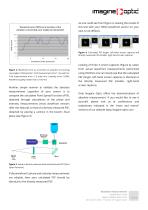
As one could see from Figure 4, viewing the results of this test with your HASO wavefront sensor on your Wavefront error (WFE) as a function of the variation of incoming rays' angles of intersection Figure 4. Calculated PSF (larger, left-hand screen capture) and directly measured PSF (smaller, right-hand screen capture). Looking of three 3 screen captures (Figure 4), taken Figure 2. Wavefront error as a function of variation of incoming from actual wavefront measurements performed rays angles of intersection. X-tilt measurement error: 1.9 µrad rms; using HASOv3, one can clearly see that the...
Open the catalog to page 4All Imagine Optic catalogs and technical brochures
-
WAVE Suite
3 Pages
Archived catalogs
-
Microtraps
4 Pages
-
AO inside laser chain
5 Pages
-
AO in femtosecond laser
5 Pages
-
Large deformable mirror ILAO
6 Pages
-
NIR optics characterization
6 Pages
-
Telescope characterization
3 Pages
-
absolute measurement
4 Pages
-
HASO R.FLEX
4 Pages
-
HASO3
2 Pages
-
bendAO?
3 Pages
-
HASO?3 WSR Wavefront Sensors
2 Pages
-
HASO R-Flex
3 Pages
-
SL-Sys LIQUID
2 Pages
-
SL-Sys neo
2 Pages
-
HASO™3 Wavefront Sensors
3 Pages


